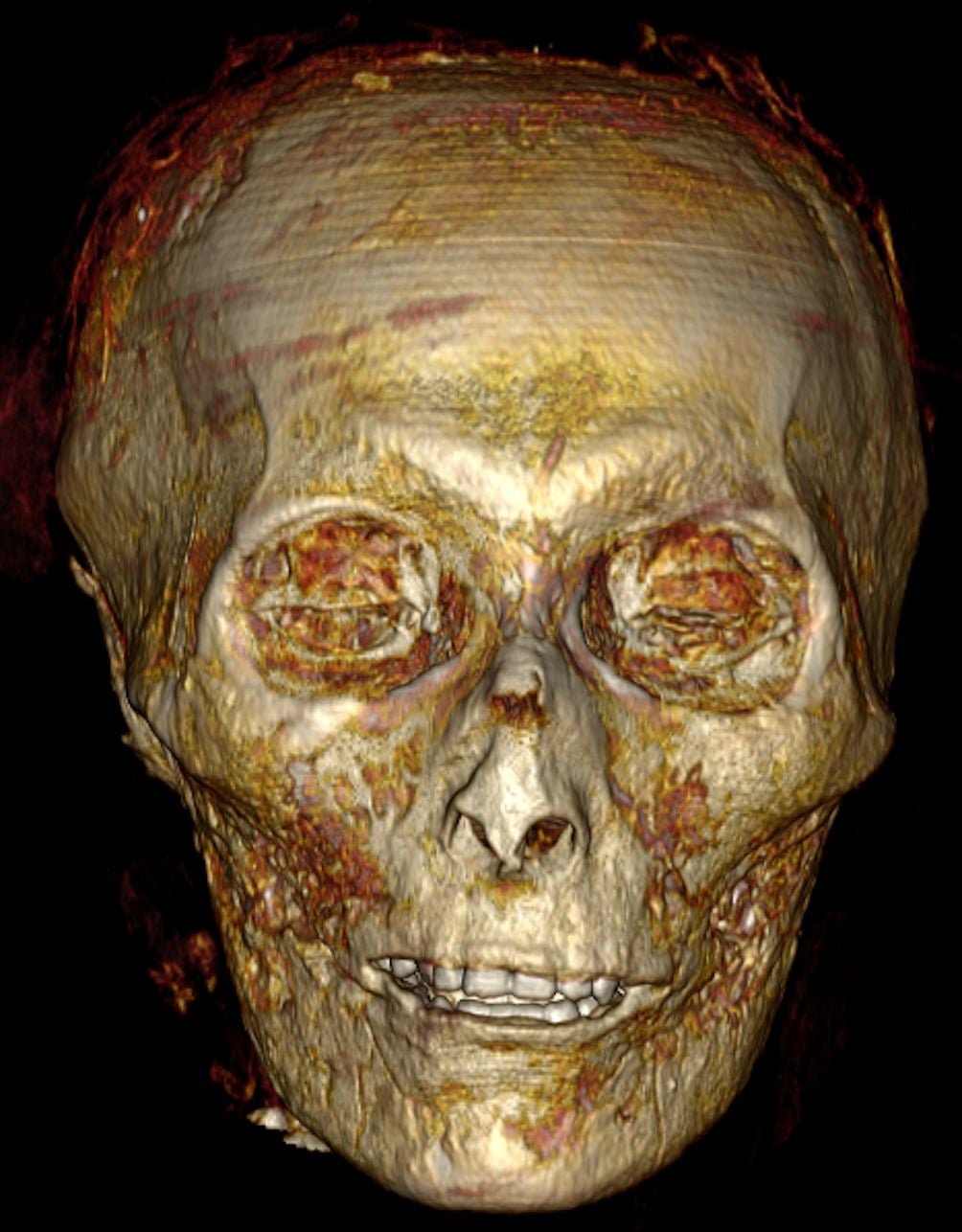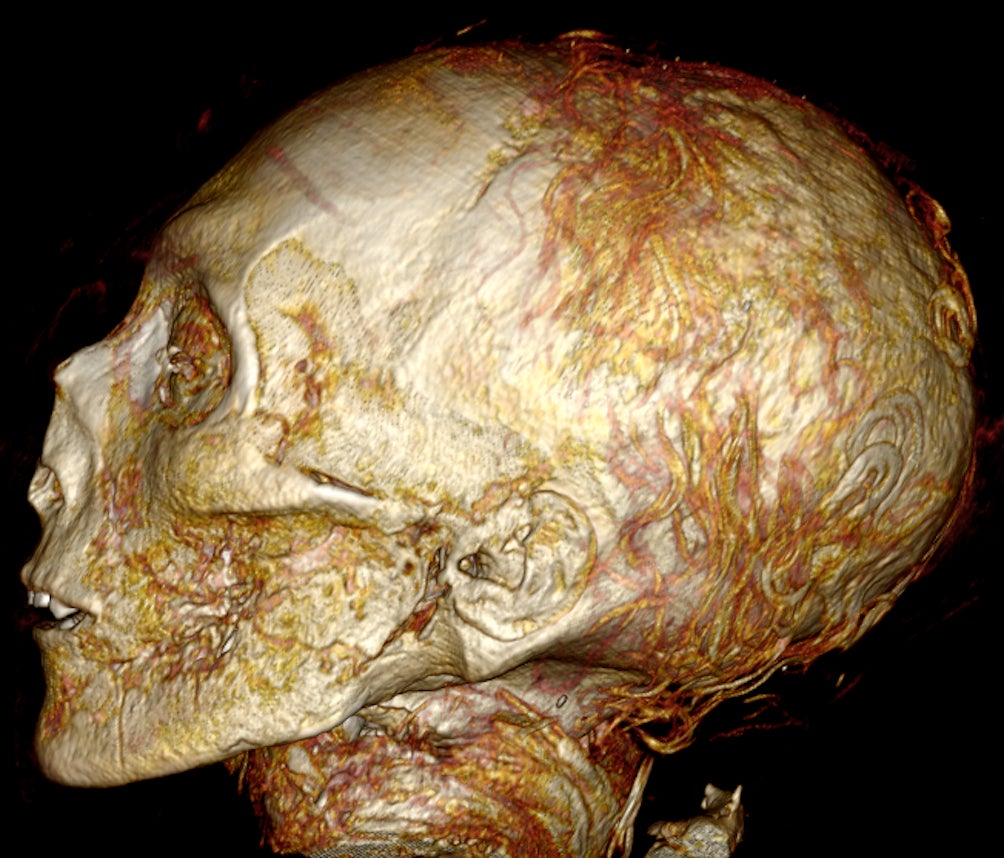The mummy of pharaoh Amenhotep I has remained intact for thousands of years, but now scientists have used non-invasive imaging to see inside the burial wrappings.
Amenhotep I ruled from 1525 BCE to 1504 BCE, during ancient Egypt’s 18th Dynasty. After 400 years after his death, his mummy was opened so the damage could be fixed which was done by grave robbers. Since then, it’s been kept at the Egyptian Museum in Cairo, reburied.
Scientists found out that he died in his mid-30s and was around 5 feet 5 inches tall. Details of their work are published in Frontiers in Medicine.
Sahar Saleem is a radiologist at Cairo University and the study’s lead author. She said that one of the most exciting factors in the research was “the opportunity to reveal the face of Amenhotep I and to see that his facial features resembled those of his father, Ahmose I.” The discoveries were possible, Saleem said, thanks to “the advancement of technology that enabled digital unwrapping of the mummy non-invasively, preserving it.”

CT (computed tomography) scans are used to look at Amenhotep’s remains. It uses X-rays to image regions of the body that are otherwise inaccessible. The scans take thousands of images of slices of the body, which can be assembled into high-quality 3D views.
The scans showed 30 different amulets and a girdle made of gold beads. The reason for the death of the pharaoh was not found. The body had been mutilated but the researchers suspect that was done post-mortem by grave robbers. Neck and limbs had been hacked.
The researchers found that the pharaoh still has some locks of hair, which are curly. He still has all his teeth, and the top row protrudes slightly. The pharaoh was circumcised, and his penis was independently wrapped. Special wrappings were applied to the head, hands, and genitals to help the deceased’s journey to the afterlife, Saleem explained.
“He ruled in the New Kingdom era: the climax of the ancient Egyptian civilization,” Saleem said. “The civilization at that time was very rich and advanced in all aspects, including mummification. Royal mummies of the New Kingdom were the most well-preserved ancient bodies ever found.”

Typically, Saleem said, “the embalmers removed the internal organs to avoid body putrefaction. All organs were removed except the heart, as ancient Egyptians believed that the heart was the house of the soul.”
Saleem added that some of the adornments on the mummy were likely added by the later embalmers to address those hack marks made by grave robbers. Even several centuries after a pharaoh’s death, the ancient Egyptians did not leave their deceased ones alone.


